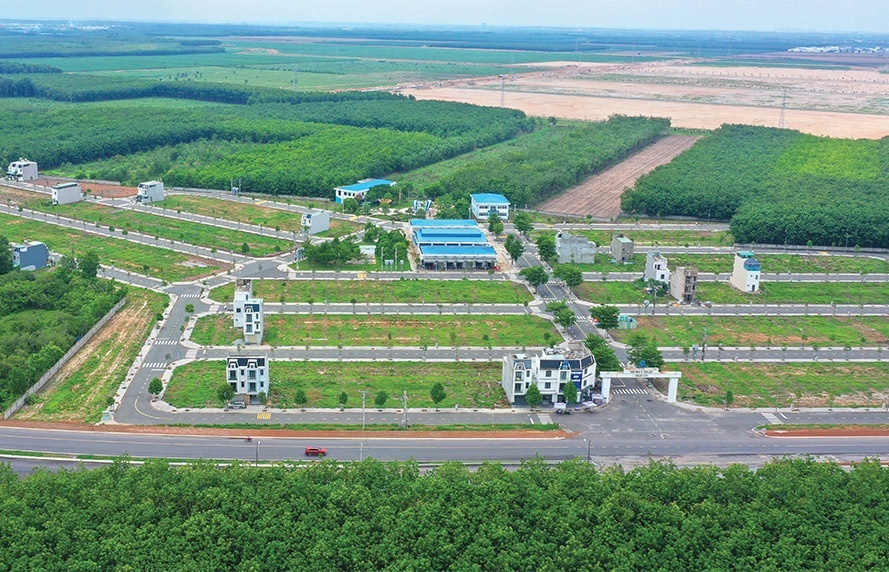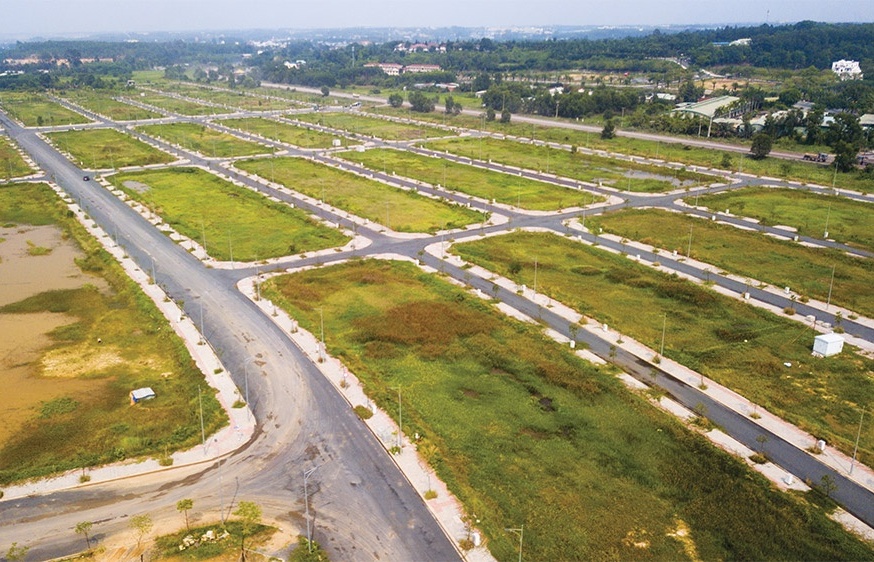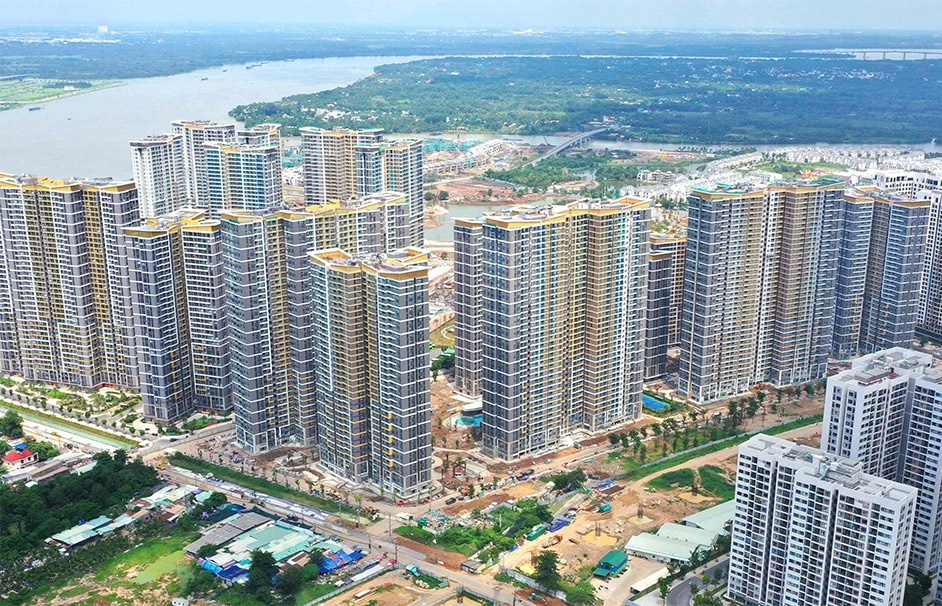Old quarter poses new concerns
Thirty-two-year-old female Nguyen Thanh Phuong led us deep into a small alley on Dinh Liet street. Her ‘house’ is located at the end of the one-metre wide alley and she opened the door and invited us inside.
Stubborn residents, outdated infrastructure and old buildings are causing major headaches for new development plans |
Our group of three people hesitated, because the house, if we can call it a ‘house’, was very small. It was only a six-square-metre flat, with a kitchen and shared toilet about 10 metres away. Realising our hesitation, Phuong stepped in first and took the mattress off the floor, leaving us space to sit down.
“I am so sorry. But you know, we have been living here for many years and it is not easy to buy other accommodation because the price is too high for us,” Phuong said.
In Hanoi’s old streets, ‘houses’ like Phuong’s are not rare and can be found in any alley of the capital city’s nine districts.
Phuong has been living in the house for many years with her husband and two children. “For you, it must be very miserable, but we have been used to the conditions for a long time, like many other people who live on the old streets of Hanoi,” Phuong said.
In a seminar held recently named “Housing environment and basic environment problems in Hanoi”, experts said that about 40 per cent of Hanoians are living in poor condition houses with a bad environment.
The seminar was the first one to discuss the environment of people living in the old residential quarters and the ancient streets of Hanoi.
No sunlight, not enough fresh water, regular flooding, no playground for children, and no access to firefighting services are the main problems faced by the old houses of the city.
According to Tran Ngoc Hung, general secretary of the Vietnam Construction Association, most of these types of houses are located in the centre of Hanoi and on old streets. However, another area where the trend can be seen is on the outskirts of the city, where many slums are quickly built for short-term lease, especially in Hoang Mai, Long Bien, Tay Ho and Tu Liem districts.
“The problem is how to eliminate these slums and upgrade them into modern residential areas in the near future,” Hung said.
“We must do that in order to improve people’s living standards,” Hung added.
An area of particular concern is Hanoi’s Old Quarter, which was established in the 11th century on an area of 180 hectares and occupied by more than 85,000 residents.
The capital city’s population has increased remarkably in recent decades. The city was home to more than 3 million in 2004, with an average density of 17,868 people per kilometre. However, this rate is much higher in the central districts. The most densely populated district is Hoan Kiem district and its commune – Hang Bo.
The high density population results in the fact that each person in these areas has an average living space of only two square metres.
This has hit the city’s infrastructure system hard, especially in the Old Quarter, where many generations still live in the same house together. Many families often share just one toilet and an alley only one-metre-wide.
The problem is very complicated because it involves so many people, both Hanoians and people who come from the countryside to live in the city. It is also a very difficult issue to resolve because each family has a different situation and most are poor or low-income people.
General secretary Hung suggested the first thing that must be done is to stop unplanned development in these areas, especially in villages next to new residential areas such as Co Nhue-Xuan Dinh, Mai Dong–Vinh Tuy or Me Tri, which are at the most risk of ‘urban slum’ development status.
Research is currently being conducted on the slums in order to build up a database and develop a plan to demolish and rebuild the offending buildings.
Hung also suggested that a certain area should first be focused on for a pilot project, in order to gain experience and better refine the following projects.
Hanoi also plans to move some of the city’s residents to its outskirts in Gia Lam street in order to reduce the population density in the Old Quarter.
However, the plan has not been implemented yet because local residents do not want to move far from areas where they have been living for many generations.
According to Nguyen Dang Binh, deputy director of the Hanoi Housing, Natural and Environment Department, the city now has 23 old living quarters as occupied by more than 137,000 people.
These living quarters were mostly built from the 1970s and are degraded, resulting in a low quality of living for their occupants.
The city’s outdated fresh water supply pipeline can only satisfy 40-50 per cent of demand, while the drainage system in these living quarters is a major cause of local environmental pollution.
The Hanoi People’s Committee has developed Programme 12 to upgrade and rebuild old residential quarters in inner-city areas.
Implementation of the programme is currently underway in Nguyen Cong Tru, Quynh Mai (Hai Ba Trung district), Giang Vo and Thanh Cong (Ba Dinh district), Van Chuong (Dong Da district) and Thanh Xuan (Thanh Xuan district).
The city has also recently permitted different economic sectors to participate in the strategy to wipe out all degraded living quarters and replace them with newly constructed buildings.
So far, these activities have only been undertaken by state-owned companies, which receive capital investment from the city’s budget.
All residents relocated from the degraded living quarters are ensured of receiving better living conditions when they are moved to the new blocks.
According to city’s Land and Housing Department, all deteriorated housing in the city will be newly built or upgraded by 2010.
What the stars mean:
★ Poor ★ ★ Promising ★★★ Good ★★★★ Very good ★★★★★ Exceptional
 Tag:
Tag:
Latest News
More News
- Trump's trade policies could shape Vietnam's economic outlook: Dragon Capital (November 15, 2024 | 16:56)
- The One Destination partners with Singapore investor and institutional fund to build ESG real estate complex (November 11, 2024 | 10:32)
- Stabilising measures must sit alongside land price hikes (November 07, 2024 | 09:56)
- CapitaLand Development records strong bookings for Orchard Hill (November 07, 2024 | 08:19)
- Public transport and real estate: The rise of Transit Oriented Development (November 05, 2024 | 15:06)
- Funding flows to second-tier localities (November 03, 2024 | 15:24)
- Hanoi has long road to travel in becoming a smart city (November 03, 2024 | 15:00)
- Nam Long Group hands over keys to Akari City Phase 2 (October 30, 2024 | 18:29)
- KTG Industrial expands industrial footprint at Taitronics 2024 (October 29, 2024 | 14:46)
- Deal signed for sustainable development at Prodezi Eco-Industrial Park (October 26, 2024 | 10:02)



















 Mobile Version
Mobile Version